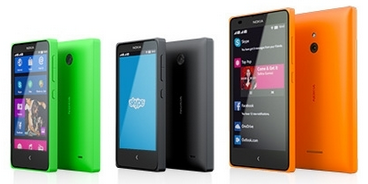Microsoft's Elop defends Android-based Nokia X phones

Any Windows Phone fans hoping Microsoft might decide to kill off the Android-based Nokia X phones once Microsoft acquired Nokia's handset business are looking likely to be disappointed.

On the first day of his first week back at Microsoft, Stephen Elop, the former Nokia CEO and new chief of Microsoft's Devices unit, defended the decision to bring those phones to market. During an Ask Me Anything (AMA) session on April 28, Elop indicated that the Nokia X phones aren't going to be discontinued.
I had guessed Microsoft would keep, not kill off, the Nokia X phones, which are built on top of the Android Open Source Project build of Android. And increasingly it is looking like this is, indeed, the case.
"Microsoft acquired the mobile phones business, inclusive of Nokia X, to help connect the next billion people to Microsoft's services," Elop told a questioner. "Nokia X uses the MSFT cloud, not Google's. This is a great opportunity to connect new customers to Skype, Outlook.com and OneDrive for the first time. We've already seen tens of thousands of new subscribers on MSFT services."
Elop's remarks echoed those of Terry Myerson, the head of Microsoft's operating systems group. When I asked Myerson recently about Microsoft's plans for Nokia X, Myerson told me "I think that the thing to focus (on) is they (Nokia X users) are Microsoft customers of our apps and services. And we will win them back to Windows."
Elop emphasized during the AMA that the developers who built Nokia custom apps, like Nokia Camera, Nokia MixRadio and Nokia TV, will continue to build these kinds of apps as employees of Microsoft.
Elop also reiterated what other Microsoft execs have said previously regarding Microsoft's intentions to continue to court other phone OEMs, even though it is now a phone manufacturer itself.
"It is GOOD for Microsoft to encourage other OEMs to also build WP devices, and there have been some announcements in this direction recently," Elop said. "Our intent is for the Microsoft Devices Group to 'make the market' so that others can participate, so we will be doing things to facilitate other OEMs as much as possible.
Quite a few Nokia stalwarts still express a lot of hostility toward Elop for his decision to back the Windows Phone OS and eliminate Meego and Symbian. One questioner even dredged up the old "Elop as Trojan Horse" analogy during the session.
Instead of shying away, Elop answered a couple of the questions/rants about his decisions. He reiterated his position that Symbian and Meego just didn't seem viable.
"(W)e could not see a way that Symbian could be brought to a competitive level with, for example, the iPhone that had shipped THREE years earlier!" Elop said. "And the Meego effort was significantly delayed and did not have the promise of a broad enough portfolio soon enough. We had to make a forceful decision to give Nokia the chance to compete again."
He continued:
"As for the Trojan horse thing, I have only ever worked on behalf of and for the benefit of Nokia shareholders while at Nokia. Additionally, all fundamental business and strategy decisions were made with the support and approval of the Nokia board of directors, of which I was a member."
One questioner asked whether Nokia would continue to be a true global presence, especially in emerging markets, now that it is part of Microsoft.
"Both Nokia and Microsoft are global companies, but it turns out that our strengths are complementary," Elop said. "We have great strength in emerging markets while Microsoft has more strength in developed markets. I think this will work well together."
Nokia's handset business officially became part of Microsoft on April 25, with 25,000 Nokia employees joining the Microsoft ranks as of that date.